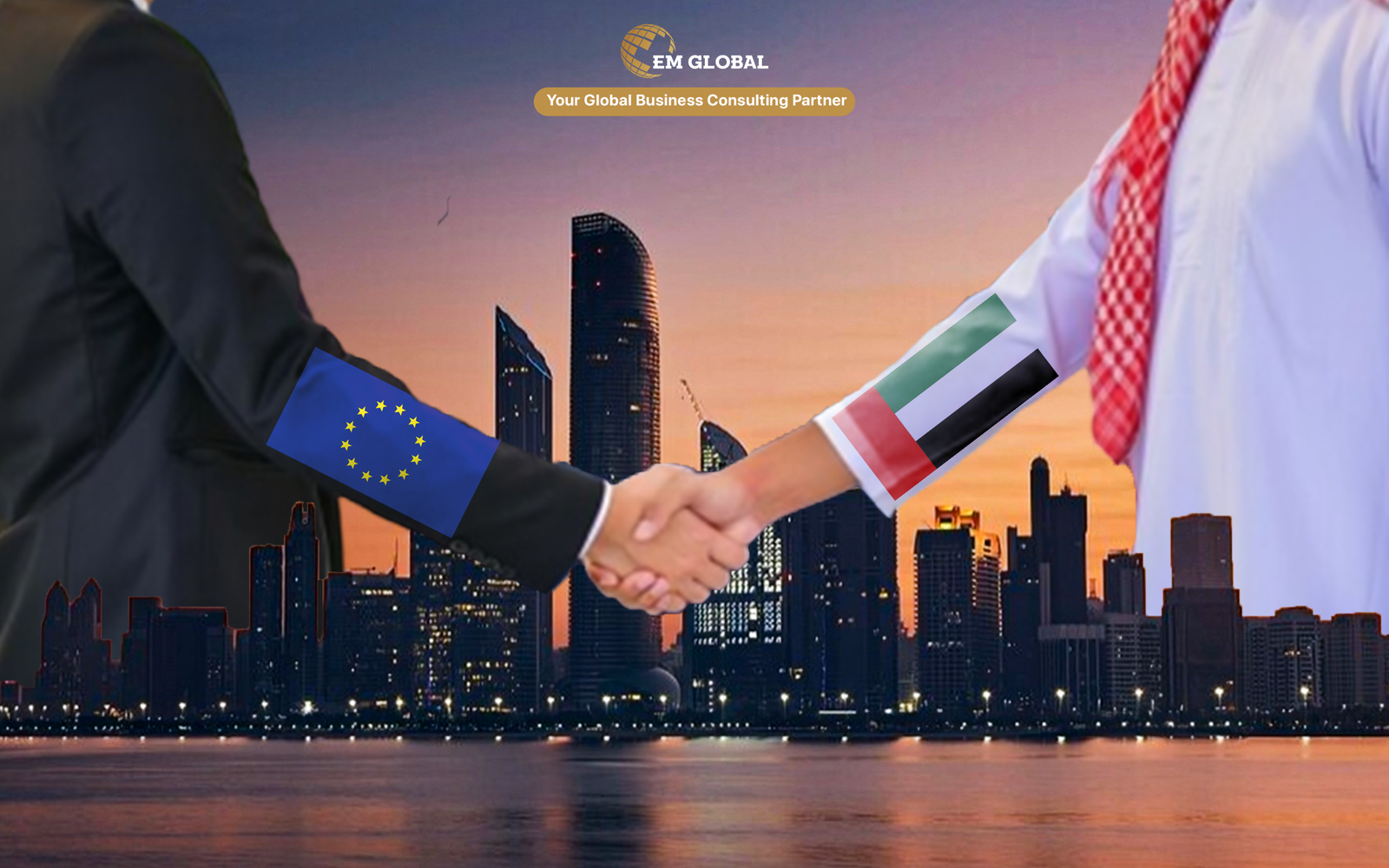
A New Era for Cross-Border Business
The removal of the United Arab Emirates (UAE) from the European Union’s high-risk third countries list marks a significant turning point for businesses engaged in cross-border trade, investment, and financial services between the Gulf region and Europe. This change follows the UAE’s earlier removal from the Financial Action Task Force (FATF) “grey list” in February 2024, after the country made substantial improvements to its anti-money laundering (AML) and counter-terrorist financing (CFT) frameworks.
For businesses, this is not just a regulatory update—it’s a practical shift that can reduce compliance burdens, speed up transactions, and open new strategic opportunities. At EM Global, we see this as a green light for companies to strengthen their UAE–EU connections, provided they maintain robust compliance standards.
Why This Change Matters for Businesses
During the grey-list period, many European banks and payment providers automatically classified UAE-related transactions as high risk. This meant longer onboarding times, frequent document requests, and increased enhanced due diligence (EDD) requirements.
Now, with the EU reclassifying the UAE to a lower risk category, banks have greater flexibility to treat UAE clients and transactions as “standard” risk—significantly reducing red tape. This means:
Cross-border payments between the EU and UAE often suffered from delays, additional compliance checks, and higher transaction costs due to the previous high-risk classification.
With the removal from the EU list:
Trade finance instruments such as letters of credit (LCs), bank guarantees, and supply-chain financing often require a positive risk assessment of the involved countries.
For importers, exporters, and commodity traders operating between the EU and UAE:
Private equity firms, asset managers, and corporate investors working between the EU and UAE can now expect:
Law firms, audit firms, corporate service providers, and real estate brokers who previously had to apply automatic high-risk procedures for UAE clients can now adopt a more tailored, sector-based risk approach.
This can lead to:
What Doesn’t Change? Maintaining a Risk-Aware Approach
While the reclassification is good news, it’s not a blanket approval for all UAE-related activities. Businesses should keep in mind:
Steps Businesses Should Take Now
To fully benefit from the UAE’s removal from the EU grey list, businesses should act quickly to realign their compliance, banking, and operational strategies:
Revisit your AML/CFT policies and adjust the UAE’s risk rating.
Remove outdated references to “EU high-risk” classification in your manuals and onboarding procedures.
Reopen discussions with EU banks that previously restricted UAE business.
Present your updated compliance position and controls to improve access to services.
Optimise your payment routing to take advantage of reduced screening delays.
Negotiate better FX rates and transaction fees now that risk premiums are lowered.
Explore higher LC limits and improved terms with your financial partners.
Expand supplier and buyer relationships with reduced transaction barriers.
Inform clients, suppliers, and investors about the improved ease of doing business between the UAE and EU.
Use this as a relationship-building opportunity to grow trust and transaction volumes.
Opportunities for Cross-Border Expansion
The UAE’s updated status positions it as an even stronger global hub for trade, finance, and investment. With a business-friendly tax regime, strategic geographic location, and now reduced EU compliance barriers, companies can:
How EM Global Supports Businesses in This Transition
At EM Global, we specialise in helping businesses navigate regulatory changes and turn them into competitive advantages. Our services include:
The UAE’s removal from the EU high-risk list is more than just a compliance update—it’s a doorway to faster, smoother, and more cost-effective business between the Gulf and Europe.
Now is the time to review your cross-border strategy, strengthen banking and trade relationships, and position your business to take full advantage of this regulatory shift.
Contact EM Global today to explore tailored strategies for expanding your UAE–EU business operations while staying fully compliant.